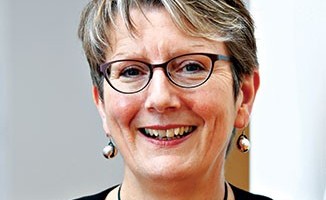Claire Stevens: Scotland’s third sector has a growing role to play in public health
"Gentlemen, we have run out of money. It’s time to start thinking" nuclear physicist Ernest Rutherford famously said. Addressing health inequalities shouldn’t be Mission Impossible, but we need to be bold and act as though time itself has run out – because it has for those already living in the health inequalities gap.
In 2015, VHS was going all out to raise awareness about the substantial differences in health outcomes between our most and least deprived communities. We highlighted that quite simply, you’re likely to get sick earlier and for longer and die younger if you are poor. Health inequalities are not inevitable though: economic and social policy plays a large part. Sadly though more than three years on, the average life expectancy in Scotland is still significantly lower than elsewhere in the UK and the rest of Western Europe.

If nothing much has changed, why am I now talking about public health, bicycles and frogs? It’s because public health is seen as the key to tackling the socio-economic determinants of poor health outcomes and supporting a shift towards preventing ill health in the planning and delivery of public services. An ambitious programme of reform is underway, led by Scottish Government and the Convention of Scottish Local Authorities (Cosla) and involving many other stakeholders, including third and community sectors.
But what exactly is public health? We all know what a health service is but unless you’re a health professional, you are likely to be a bit hazy about public health. You might think it’s to do with sanitation, clean water and environmental health. At a push you might think about infection control in hospitals or communicable diseases. A useful definition is: “The science and art of preventing disease, prolonging life and promoting health through the organised efforts and informed choices of society, organisations, public and private, communities and individuals”.
Put like that, you can see why public health is the third sector’s business as much as that of the NHS and statutory bodies and why we are key stakeholders in the reform programme. Whereas the NHS might talk about health improvement, health protection and health service improvement, we are more likely to talk about community health and wellbeing, person-centred approaches and advocacy.
Think about a charity like Waverley Care, busy reducing new HIV and Hepatitis C infections, getting people diagnosed, supporting those affected, challenging stigma and promoting good sexual health. Or Nourish Scotland, campaigning for food justice by both supporting grassroots community efforts and influencing national policy and legislation. Or Streetwork, which knows that people struggling with homelessness find it difficult to access services so goes out and meets with people where they are, including on the street.
In December a new agency, Public Health Scotland, will pave the way for a whole system approach to public health for the first time. The frog on a bicycle symbolises dynamism, agility and a determination to do things differently, so here’s hoping that’s the system we manage to create.
Claire Stevens is chief executive of Voluntary Health Scotland.
At the Gathering 2019:
The future of public health – bicycle or frog? Wed 20 Feb, 10am, Alsh Suite 2






